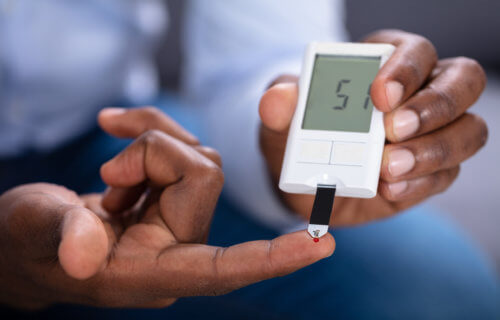In a study of 175 diabetes patients, the team discovered that using a continuous glucose monitor — instead of finger pricking — helped to significantly decrease haemoglobin A1C levels. Over eight months, the group lowered this measure of blood sugar by 1.1 percent. Participants using the standard blood glucose meter only lowered their blood sugar by 0.16 percent.
Until now, scientists have mainly examined the benefits of continuous glucose monitors in patients with type 1 diabetes or type 2 diabetes patients who take multiple insulin injections each day. This study is among the first to look at type 2 diabetes patients who use basal insulin, the long-lasting insulin taken once or twice a day.
“Not only does this trial demonstrate the benefits of continuous glucose monitoring for these patients, a technology that hasn’t been covered by many insurers for those with type 2 diabetes, but these benefits were seen across a broad spectrum of socio-economic status and racial backgrounds,” says study author Rodica Busui, M.D., Ph.D., vice chair of clinical research at Michigan Health’s Department of Internal Medicine, in a university release.

A better life for diabetes patients
Study authors started enrolling volunteers in the randomized clinic trial in 2018. Each participant took either one or two daily injections of basal insulin. Some also took non-insulin medications to help control their blood sugar levels as well.
Along with testing how well continuous glucose monitoring works, Busui’s team also studied the impact it has on how diabetes patients manage their condition and its effect on their life satisfaction. With a continuous monitor in place, the group was better able to manage their blood sugar levels throughout a full day. As a result, life satisfaction scores went up as well.
“For me, what’s most exciting is that this work demonstrates that using continuous glucose monitoring is effective in substantially improving blood sugars levels and decreasing the risks of hypoglycaemia in those that were randomized to use a continuous glucose monitor compared with the usual finger-prick,” Busui concludes.
“This may open the door for broader coverage of this game-changing technology for all patients with diabetes. More patients can manage their diabetes if they have access to this resource and their primary care physicians are educated on the benefits of their patients utilizing it.”
The team adds that their findings will come as a big relief to Medicare patients. The insurance program recently announced it is dropping the requirement of needing finger pricks four times a day to qualify for a continuous glucose monitor.
The findings appear in the journal JAMA.
https://www.studyfinds.org/finger-pricks-glucose-monitoring/
No comments:
Post a Comment